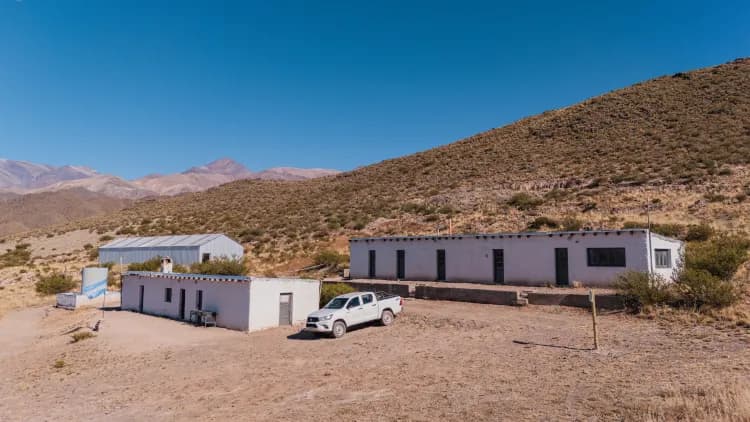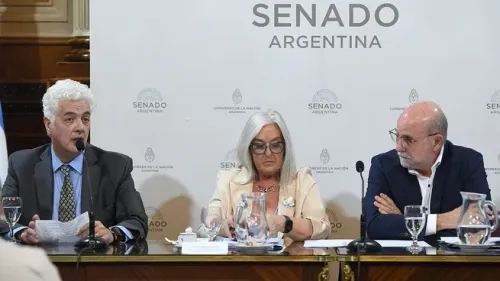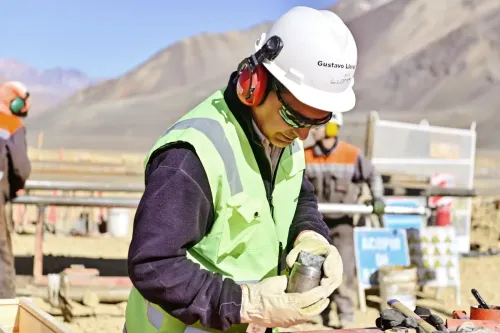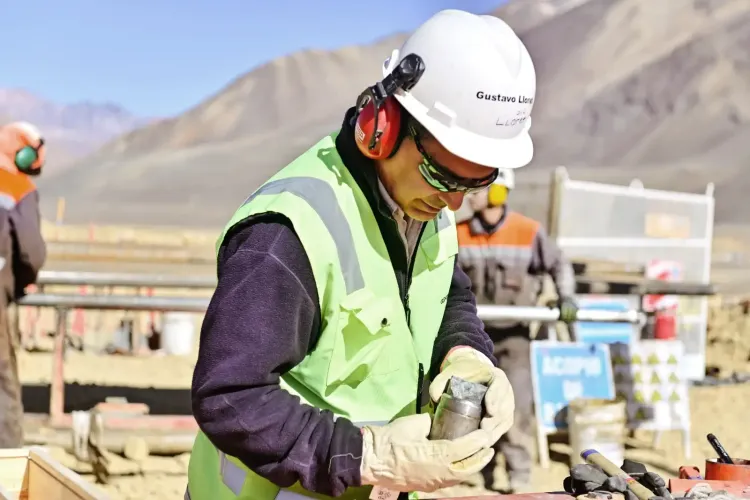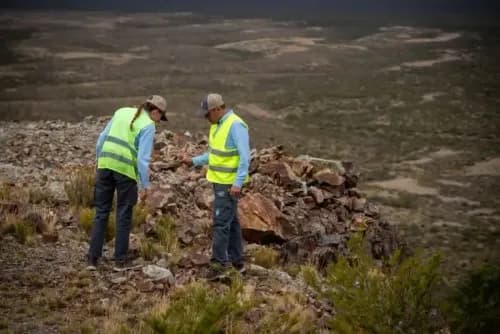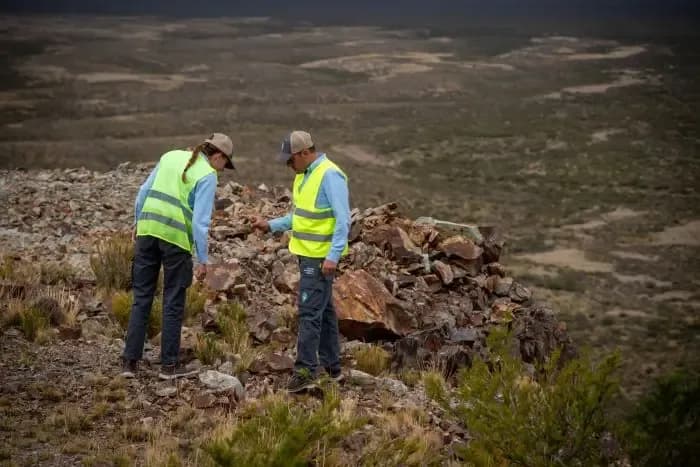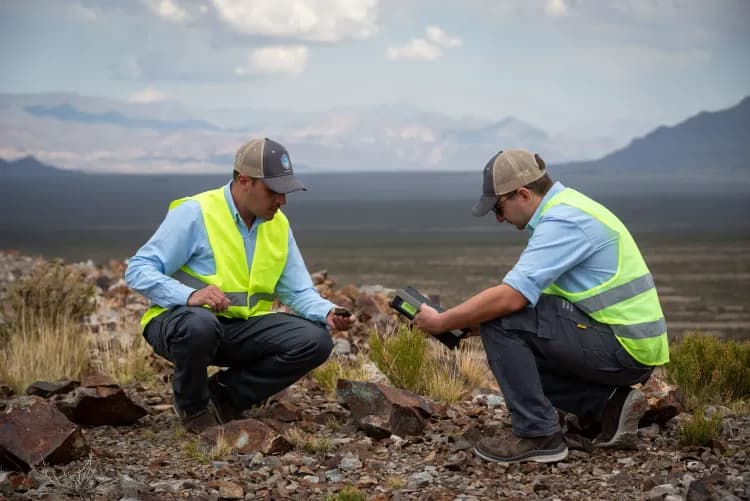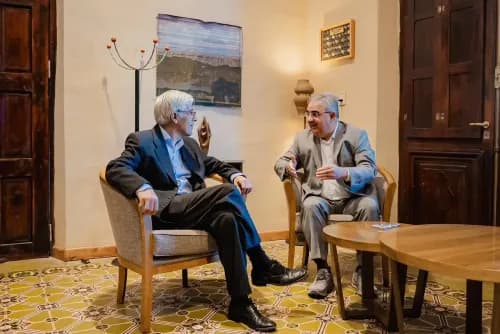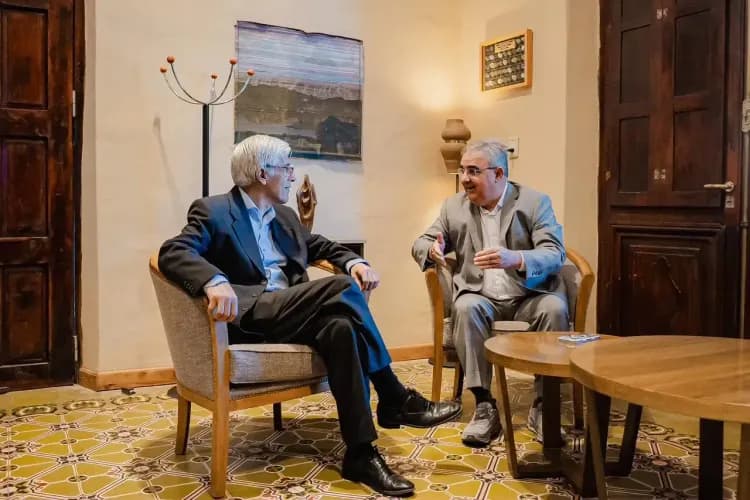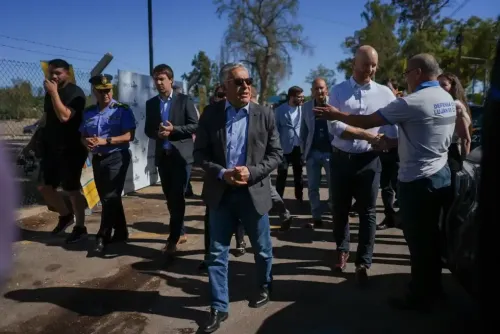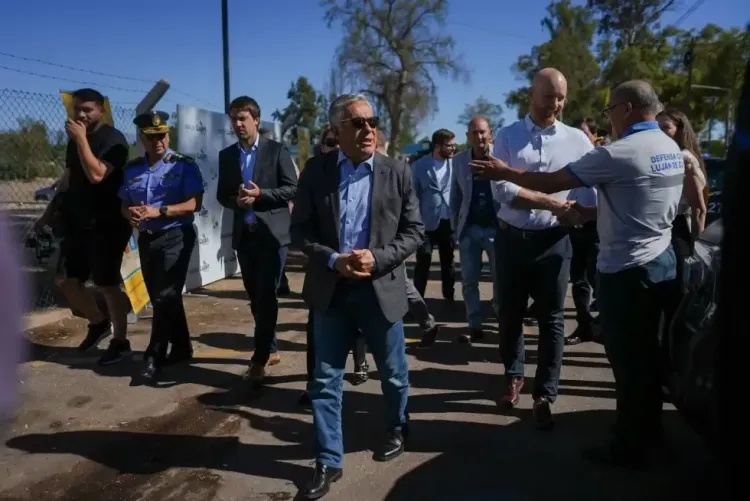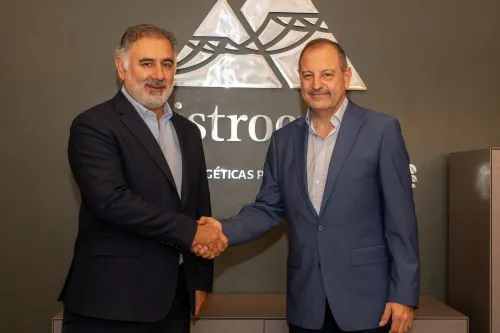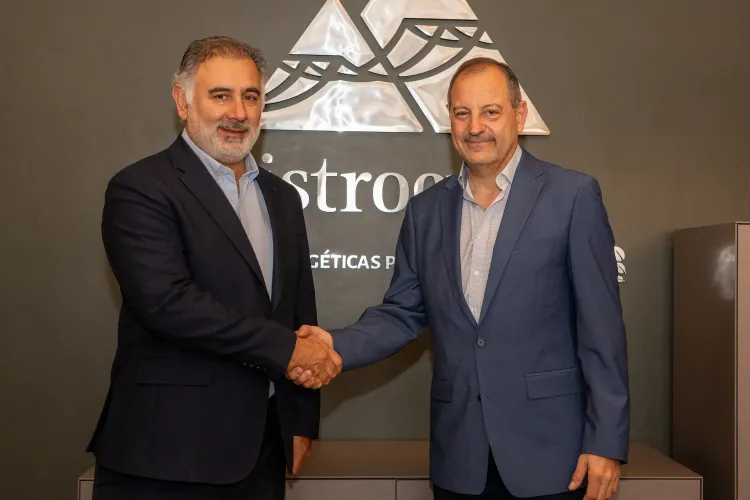Representatives from Curtin University, including Professor Mark Buntine and John O'Neill, visited San Juan Province to sign Memoranda of Understanding (MOU) with the provincial government and the National University of San Juan. The MOUs aims to facilitate the education of students from San Juan in the mining industry, focusing initially on geology and mining engineering.
By Panorama Minero
This initiative is part of Curtin University's broader strategy to collaborate with regions like San Juan and Mendoza. With almost 125 years of history, The Western Australian School of Mines (WASM) at Curtin University plays a significant role in training professionals for the mining industry, both in Australia and globally. The university has also adapted its curriculum to address the energy transition.
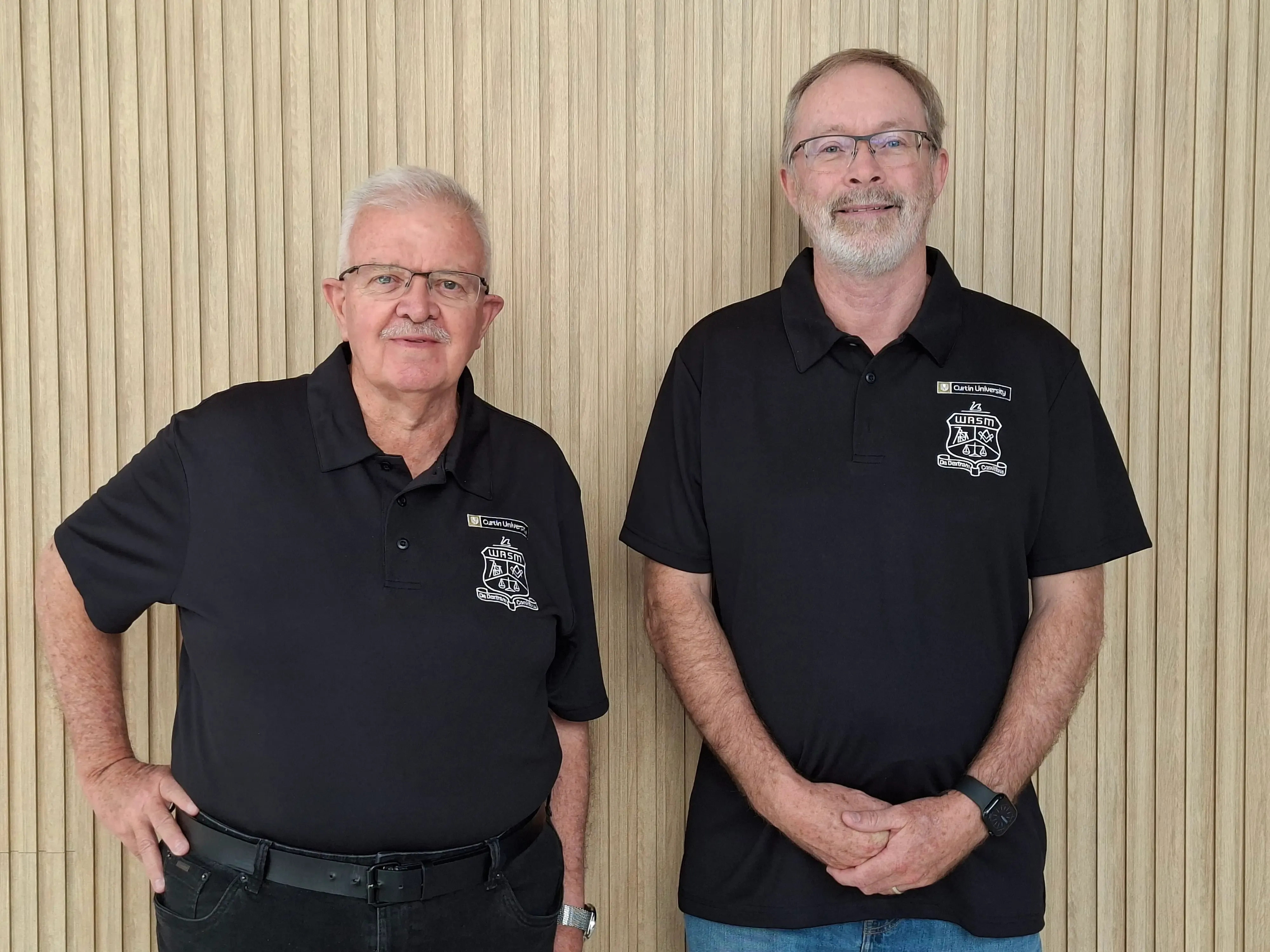
Subscription of a MOU: The purpose of traveling to San Juan Province
“On Monday, 15th September, we signed an MOU –Memorandum of Understanding- with each of the San Juan provincial government and the National University of San Juan (UNSJ). These agreements say that the San Juan government and UNSJ will work with us to facilitate education of students from the province to work in the development of the San Juan mining industry. And in the first instance, we will be focusing on the disciplines of Geology for Exploration and Mining Engineering. Subsequent disciplines will follow.” (MB)
“This is our first time in San Juan. And we also had meetings with the Catholic University of San Juan. But John and I came to Mendoza in May and entered into similar MOUs with the provincial government of Mendoza and the National University of Cuyo. We are focusing our efforts in the first instance on the provinces of San Juan and Mendoza.” (MB)
The most important objective of a MOU
“MOUs are interesting things in the sense that they represent the start of a relationship between our university, the provincial governments and universities, with five-year initial commitments. What we found with these here in Argentina is they have been driven by both the universities we are talking to, but also by the governors and the provincial governments. And that has given us confidence that we know that if the government and the governors are behind the drive for collaboration and cooperation between the WASM, Curtin University and universities like San Juan and Cuyo in Mendoza, it means that we have the financial backing of the provincial governments and the academic backing of the universities.” (JO)
“I think it demonstrates to the provincial governments that we are very serious about Curtin University and the WASM, working with Argentine provincial governments, Argentine education and the Argentine resources industry, to upskill and reskill their workforces. And for Argentina to be able to produce its own mining engineers and all the other types of engineers and geoscience professionals they need in the numbers that they need them in the coming years.” (JO)
“The WA School of Mines will celebrate its one hundred and twenty fifth anniversary in 2027. So, it has been very long established and is one of the most prestigious mining schools globally. So, from our point of view, we are looking for long term productive relationships that will lay the foundation for the next 125 years of academic excellence.” (JO)
The mining academic programs offered by the Curtin University
“Curtin University is a comprehensive university and WASM is part of the Faculty of Science and Engineering. There are four faculties in the University, and this initiative is focused inside the Faculty of Science and Engineering. The WASM focuses on mining engineering in this context. But we also had colleagues from a different school, the School of Earth and Planetary Sciences, who represent geology, who joined us to be a part of the MOU signings.” (MB)
Argentine Students at Curtin University
“One of the reasons I am optimistic about these relationships that we are building now in San Juan and Mendoza is twofold. Specifically in the WA School of Mines we have a number of South American students not from Argentina. We have quite a few Chilean students, for example, and a couple from Peru; both established countries with a mining industry. These students are very good. More broadly, in our Faculty, we have several Argentinian students, for example, in disciplines like mathematics. And they are technically very good. Their English language is very good. And so, I am confident that the solid education foundation that is in place in Argentina is good to set it all up.” (MB)
“We do not have a lot of Argentinian students yet in WASM, but we have South American students. But we do have Argentina students scattered around other parts of the Faculty, including, and what particularly excites me is in mathematics, because that's a technically rigorous discipline.” (MB)
“We see a very bright future between Curtin, the Western Australian School of Mines, and Argentina. It is a new marketplace for us, and we are very serious about it. And what we're pleased to see is that the provincial governments and big universities are very serious about it, too.” (MB)
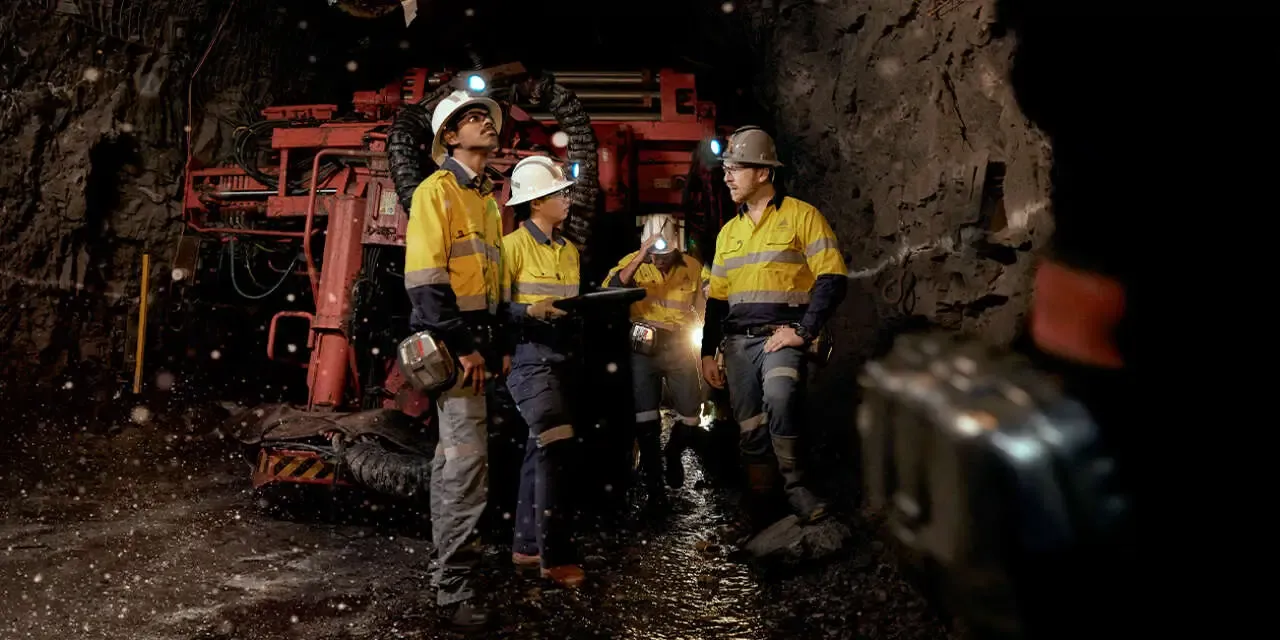
The interest of young Australians in pursuing mining studies
“One of the disciplines in WASM used to be known as Petroleum Engineering. And student numbers declined rapidly because young people started to get the view that fossil fuels were contributing to climate damage. In response to that, we have fundamentally restructured and rebuilt the curriculum to prepare graduates for the energy transition. And the undergraduate Major is now known as Energy Engineering. The first cohort of students commend their studies earlier this year.” (MB)
“We are not seeing a similar decline in student interest in in mining related studies. And I think in the Western Australian context that is because people see that there are very high paying careers available in the industry and pragmatism plays a large part in this. We are a little unique, at WASM compared to many mining schools around the world in that our student numbers have increased significantly. We have over 400 students in mining engineering alone, roughly 200 undergraduate and 200 postgraduate students. Our graduates are trained for working on the global stage and we have graduates working all around the world.” (MB)
Education as an Investment
“The real cost per students from Argentina to study at Curtin University, in my estimation, is A$70,000 per student per year. This cost is roughly 50% for the tuition fees and 50% for living expenses - renting accommodation, buying food, health insurance, all those types of things. You could see how, if we had 20 students, for example, that is an A$1.5 million investment. This is big money, but it is not a cost, it is an investment in Argentina’s human capital development.” (MB)
“And so, one of my strategic commitments is to make sure that we do not try to get too big too quickly because it could collapse. Let's show that it works. Let's demonstrate that it is successful. Let's focus on geology and mining engineering, because they are the disciplines identified by the provinces here in Argentina, not because we at Curtin are proposing these areas of study. And when people come back with their qualifications, and they have successful careers in the Argentinian mining industry, that will be the platform upon which we can grow.” (MB)
“When we attended Arminera earlier this year, we met with senior leadership from major multinational mining companies. Even though these were short meetings, it was very important from our point of view that they expressed support for this nascent initiative. The mining houses recognize that they need to be able to grow their own mining professionals in Argentina (and in other parts of South America as well).” (JO)
“So, when I talk about, for example, A$1.5 million, that's a lot of money, but in the context of many billions of dollars, it is a modest strategic investment in human capital, the development of the human resource that the companies will need to undertake their endeavors. This initiative will be a joint investment between the provincial governments and industry, and on the academic front, with local universities”. (MB)
New technologies and Automation in Mining
“Since 2018, our mining curriculum at WASM has been significantly updated and overhauled to incorporate aspects of digitization and automation. In the Western Australian mining industry, particularly the iron ore industry in the Pilbara, automation controls a lot of the mineral extraction, processing and transportation dimensions. Computers drive trucks, the trains, the drillers. Most of the mining operations for the big mining companies are all run out of operations centers in Perth, thousands of kilometres from the mine sites. That is not the case in some smaller operations, for example, some gold mines, because the capital expenditure associated with automation has been very high. The big multinationals can afford it. We are investing a lot of effort into both research and education to contribute to the development of open-source technologies to enable automation and robotics to contribute to smaller operations.” (MB)
“In the Western Australian gold mining industry, which is significant, the scale of many mining operations is significantly smaller in scope than the behemoth that is the iron ore industry. A typical gold mine in Western Australia digs up big rocks, crushes them to smaller rocks, crushes them even finer, and eventually a fine material is fed into cyanide tanks for gold extraction. That process has lots of sensors for temperature, for concentration, for pH and so forth.” (MB)
“At present, in many operations, the data from those sensors feeds into a computer that a human operates and who decides how to change various parameters to ensure process efficiency. We are putting a lot of our effort into the open-source technology concept, so that companies are not locked into one particular hardware or software environment as they seek to gain operational efficiencies. I am utterly convinced that AI algorithms are going to start to drive how that happens. It's at the bleeding edge of the mining industry globally and it is a big part of what we are looking to contribute to.” (MB)
Demand and Supply of Mining Professionals
“There is an ongoing tension in the supply and demand dynamic. What we tend to find is that in the resources sector more broadly, it is a cyclical endeavor. The industry go through the economic cycles of boom and bust: prices start to rise, so everybody gets into the operation, they flood the market, and prices drop. Student demand has traditionally tended to be equally cyclical but out of phase with the industry cycle. So, when markets start to turn down, a lot of professionals go: “Well, I'm losing my job at the moment, so I'll go and study and upskill so that I am well prepared for the next upward swing”. That is the domestic dynamic where the student numbers traditionally cycle. Since COVID we're in a completely different world and there hasn't been enough time to see what the long-term pattern is. At WASM, the student numbers are very, very strong at the moment.” (MB)
“Since the COVID-19 pandemic, undergraduate (largely domestic) and postgraduate (largely international) student demand is consistently very high. I suspect that one factor driving sustained student interest in the field is that as one mineral sector experiences a depression (for example, at the moment global lithium and nickel prices are depressed), other sectors experience growth (for example, the gold price is current at record highs).” (MB)
“In the case of iron ore, the market price bounces around a little bit, but it's recently been sitting between one hundred and one hundred ten US dollars a ton. It costs the big mining houses several tens of dollars per ton to dig the ore up and ship it to port. There is persistent chatter in the media that the price of iron ore will inevitably weaken due to, for example, a softening Chines economic landscape. But the price of the commodity remains strong.” (MB)
“All of these examples point to strong career opportunities for graduates in mining related disciplines regardless of the cycle of specific mineral sectors.” (MB)
Critical Minerals
“There is a lot of early investment in Australia for critical minerals and rare earth extraction and processing. And that is also creating strong employment opportunities for graduates. In many respects, Australia represents economic opportunity in the mining and processing of many elements in the periodic table. The country has a stable political and economic landscape and is seen as a good investment opportunity. This creates further employment and career development opportunities, which is, I’m sure, contributing to strong student enrolments.” (MB)
Minerals and Geopolitics
“What we are seeing also from a geopolitical point of view is that there is a drive out of Europe, the Americas and parts of Asia for the development of diverse sources of minerals as a raw material for technological and economic development. This preferred diversity of supply is somewhat limited globally, with China, for example, dominating much of the rare earth processing and supply chain. Many countries are looking to invest to develop diversity in global supply chains and sovereign capability. (JO)



